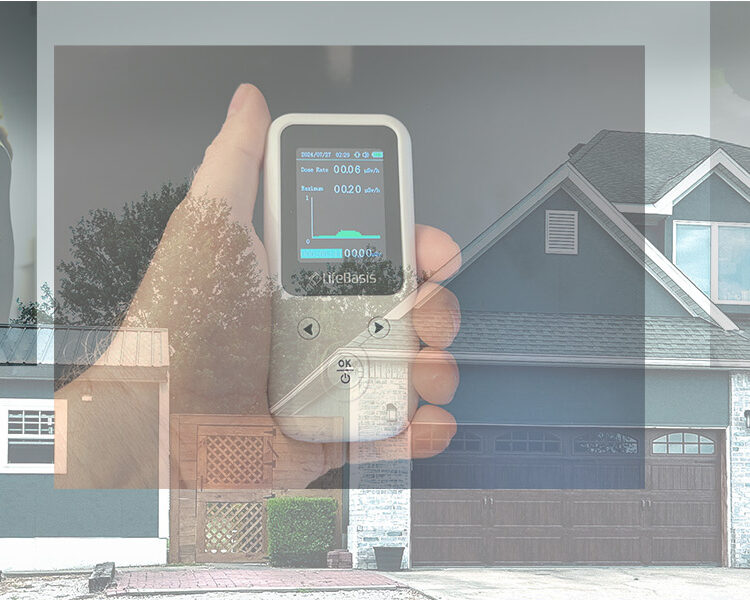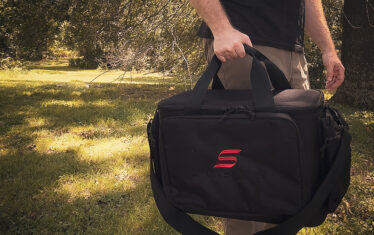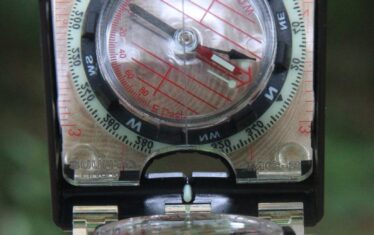Welcome back to part two of our emergency preparedness guide. In the first article, we explored the general types of emergencies you should consider when preparing your home. In this article, we will dive deeper into a wide range of preparations and things to consider when preparing your home for emergencies. We can’t cover it all in just a couple of articles, but this is a good place to start.
Detailed planning and preparation can significantly enhance your resilience in the face of unforeseen events. It’s better to be prepared and not face an emergency than face one and not be ready.

Preparedness Categories
There are several areas of preparedness to consider when making a home emergency plan. This isn’t a “one size fits all” guide, but there are some ideas to consider as you make your preparations.
Let’s go over some of the most basic things in each category you should consider when starting your homes emergency preparedness plan.
Water Collection, Filtration and Storage
We all know water is essential for survival and the average person can only live about three days without it.
The Federal Emergency Management Agency (FEMA) recommends storing at least one gallon of water per person per day for a minimum of three days. However, more extended emergencies necessitate advanced planning.
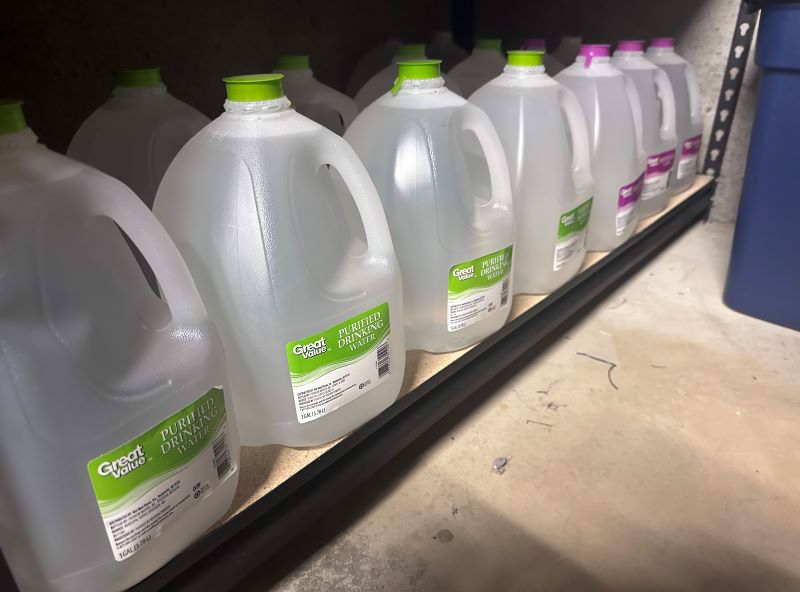
Short-term Water Storage
For short-term emergencies, you can store water in commercial or food-grade water containers. Make sure these containers are kept in a cool, dark place and rotate your water supply every six months to maintain freshness.
Most adults need 10-15 cups of drinking water per day, but don’t forget about water needed for cooking as well. I like to keep a one-month supply of drinking water on hand at all times. That will give me time to set up a long-term system if needed. How much water you store will depend on family size, available storage room, and other individual factors.
Long-term Water Collection and Storage
In long-term emergencies, you may need to collect and filter water. We are used to water coming from the faucet or the store, but what if those are no longer an option? Where will your water come from?
- Rainwater Collection: Finding some way to collect rainwater is important. Position barrels or large containers under gutter downspouts to collect rainwater. Cover the barrels with a window screen to filter out larger items.
- Natural Water Sources: Identify nearby natural water sources such as rivers, lakes, or streams. Be aware of potential pollutants and treat the water before consumption.
- Water in your home: One place to find a small supply of water is right under your nose. Many people forget about their hot-water heater and toilets. Your hot-water heater is full and can be drained by attaching a water hose to the spout on the bottom of the tank. You also have water stored in the tank of every toilet in your home. Collecting water from a “toilet” sounds gross, but the water in the flush tank is relatively clean.
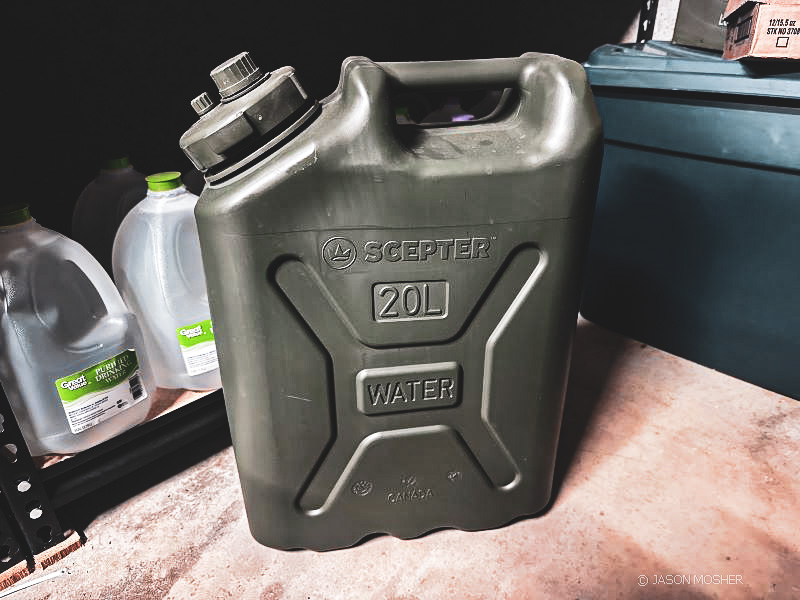
You can store water in a variety of containers, but they need to be airtight. Once you have filtered and purified the water, add the bleach mixture (mentioned below) to the water and around the lid before sealing it. I use heavy-duty water storage containers for long-term water storage.
Common water filtration methods
Collected water must be filtered and purified to ensure it’s safe to drink. Here are some common ways to filter and purify your water.
- Coffee Filters and Black Charcoal: Use coffee filters to remove large particles and black charcoal to improve taste and remove some contaminants. You can use an empty 2-liter bottle for this by cutting the bottom off the bottle and turning it upside down. Place a coffee filter in first, followed by black charcoal, then another coffee filter. Pour water through the cut off portion of the bottle and it will come out the threaded end clean.
- Boiling: Boil water for a minimum of one minute in order to kill bacteria, viruses, and parasites. Run the water over a coffee filter first to help filter it before you boil it.
- Chemical Treatments: Use water purification tablets or household bleach (unscented, with 5-6% sodium hypochlorite) to disinfect water. A good mixture of bleach and water is 1/8 teaspoon of bleach per gallon of water. Mix it up and leave it for 30 minutes. You can also treat water this way for long-term storage.
- UV Purification: A natural way to kill bacteria is with UV rays from the sun. Place clear plastic or glass water bottles in direct sunlight for at least eight hours. Again 2-liter pop bottles work great for this once the label is removed.
- Commercial Water Filters: Portable or home water filtration systems are a great thing to have. Portable systems such as the LifeStraw or Sawyer Mini, are effective for removing bacteria, protozoa, and other contaminants and are affordable. For home use, consider a Berkey water filter system or similar high-capacity filters.
Food Storage
Having a stockpile of non-perishable food is important for both short and long-term emergencies. This is just my opinion, but I would stay away from those foods you would only eat during an “emergency.” Have you ever tried chewing on some type of emergency food bar that tastes like carboard?
My rule of thumb is only keeping food you will eat when it’s not an emergency. That doesn’t mean it must be food you eat every day, but would you eat it on a camping trip for several days? If not, don’t use it.
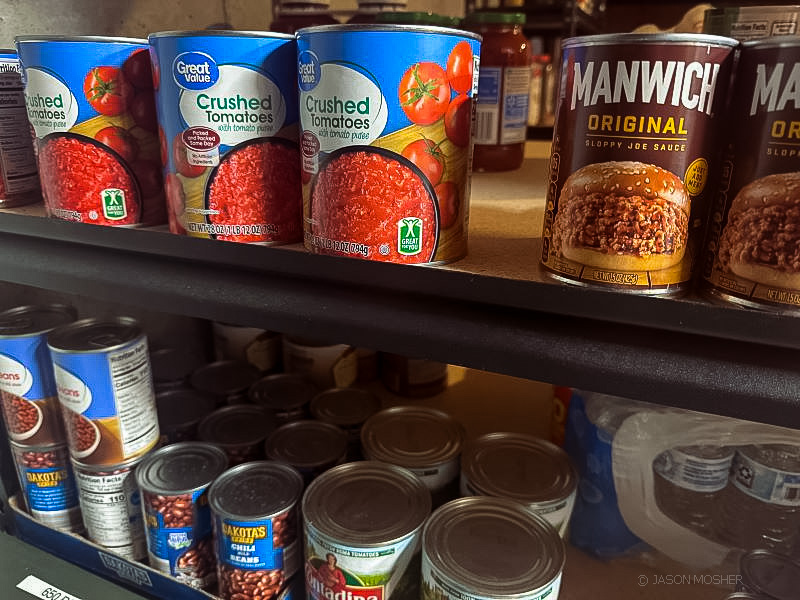
Short-term Food Storage
For short-term emergencies, stock up on canned goods, dry goods, and ready-to-eat foods. I like to keep about a one-year supply of this type of food. Most canned foods have at least a 1-year shelf life. If not, make sure to keep track of the date and rotate your canned foods out.
I only keep canned foods we eat on a regular basis so it’s easy to keep them fresh. One of the important things about canned foods for short-term emergencies is most do not require water to prepare. Save your water for drinking! Mylar bags are another great way to extend a foods life. These are not great for long-term storage but can easily add months or a few years onto a foods expiration date.
Long-term Food Storage
Long-term food storage requires planning and selecting foods with extended shelf lives. Here are some options to consider.
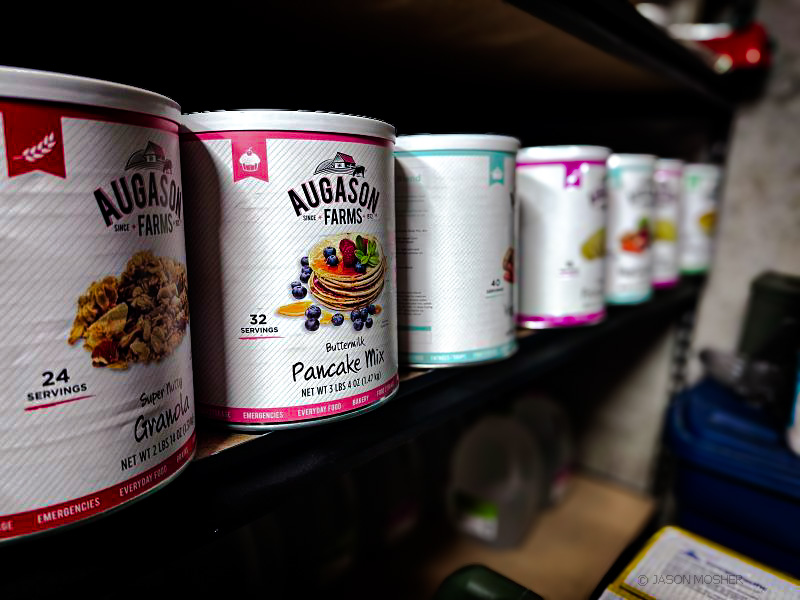
- Dry Goods: Rice, beans, pasta, and grains can be stored for years if kept in airtight containers with oxygen absorbers.
- Canned Foods: Canned foods like vegetables, fruits, meats, and soups are also good for long-term storage to some degree.
- Freeze-dried Foods: Freeze-dried foods, such as those from Augason Farms or Mountain House, can last up to 30 years. They retain nutritional value and flavor and require only water to rehydrate. I use Augason Farms a great deal, and the food actually tastes good.
- Dehydrated Foods: Dehydrated fruits, vegetables, and meats are lightweight and easy to store. Some have longer expiration dates than others so make sure to cycle these out as well.
- Vacuum-sealed Foods: Vacuum sealing extends the shelf life of foods by removing air and preventing oxidation. This can work great with certain types of foods. If you plan to use this method, look up some food ideas and make a list of which ones work best.
Consider storing a combination of these food types to ensure variety and nutritional balance. Don’t forget about simple things like salt, pepper, and other seasonings. Jello packets last forever and come in a lot of flavors.
I once read of a family in another country that horded 55-gallon barrels of rice and water so they could survive during a civil war. Within a month the whole family was starving because they couldn’t make themselves eat only rice every day. They ended up fleeing their home with hundreds of pounds of rice still in the basement.
Having a variety of foods or multiple options for the other categories is not just a good idea, it’s an essential one. Even during an emergency, you want to keep your food intake as close to normal as possible. Bland, dry foods are not as easy to live on as you think. Even adding some comfort foods and snacks are great at boosting morale during stressful times.
Medical Supplies and Training
In emergencies, there may not be much access to hospitals or other medical professionals. Have a medical kit on hand and make sure you know how to use the items in it. Here are some basic medical supplies to start with.

A basic first aid kit should include:
- Adhesive bandages in various sizes
- Sterile gauze pads and medical tape
- Antiseptic wipes and ointments
- Tweezers and scissors
- Pain relievers (aspirin, ibuprofen, acetaminophen)
- Cold packs
- Elastic bandages
- Thermometer
- CPR mask
Advanced items to consider:
- Suture kit or butterfly bandages for wound closure
- Splints for broken bones
- Tourniquets for severe bleeding
- Burn treatment supplies
- Prescription medications (a 30-day supply if possible)
- Antibiotics (consult with a healthcare provider for appropriate types and dosages)
- EpiPen for allergic reactions

It’s also important to consider keeping Iodide tablets on hand for nuclear emergencies. This is something we hope to never need, but in today’s world, it’s better safe than sorry.
Iodide tablets (KI) are a type of iodine that helps block radiation from being absorbed by your thyroid. It doesn’t cost much to purchase these, and they can be kept at home and in a Get-Home bag in your car. I like to keep these and a Geiger Counter in the bag in my car.
As we mentioned in the first article, you may only have about 10 minutes to take shelter after a nuclear blast before the fallout hits. You will need to stay in place for 24 hours before trying to relocate to a safer area. Having these tablets on hand is crucial.
Medical Training
Knowing how to use these supplies is just as important as having them. Consider taking a First Aid and CPR course. The Red Cross offers training that covers basic and advanced first aid, CPR, and AED (Automated External Defibrillator) use.
Consider buying a few medical books that cover the most common emergencies and treatment methods. During an incident, you may not have access to the internet.
Communications
During large-scale emergencies, conventional communication networks may be disrupted. Alternative communication methods may be limited, but there are a few options.
Two-way Radios: Two-way radios (walkie-talkies) allow you to communicate with family members and neighbors within a limited range. Keep some extra batteries around so you can swap them out if needed.
Note Drop Off Location: If you have friends or family close by, think about creating a central spot for leaving notes and messages. If power and cell phones go down, this can be a good way to communicate important information without waiting around for someone to show up.
NOAA weather radio: Keep a NOAA weather radio on hand so you can listen to any emergency broadcasts. You can find battery powered, hand-crank, or solar power models to make sure you hear any broadcasts.
Physical Security
Another thing to consider during widespread emergencies is physical security. If there is no water, food or other supplies at the store, people will be out looking for it. The more desperate people get, the more daring they will become. But a few simple systems can help deter would-be thieves.
Being prepared to defend your home is important. For my tactical gear, I like to use Safariland equipment, and you can never go wrong with a Glock pistol.
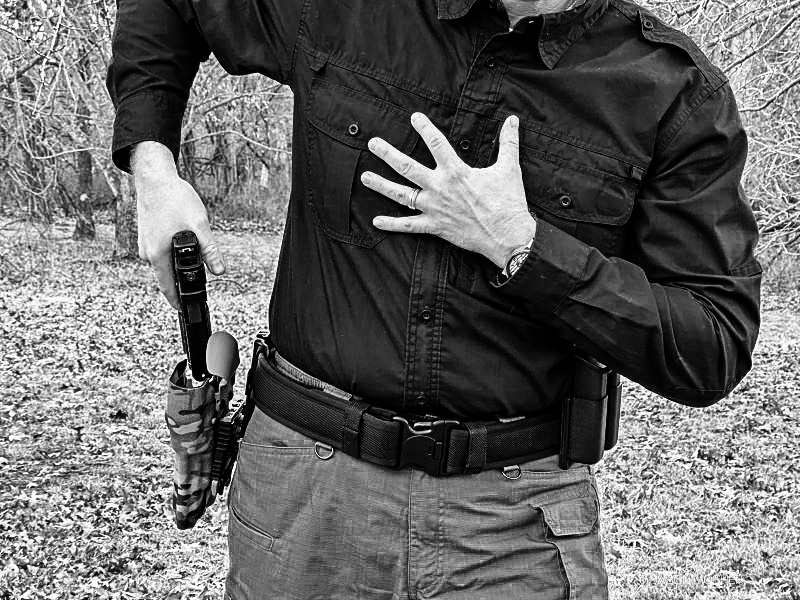
- Secure doors and windows: Ensure all doors and windows have high-quality locks. Deadbolts are better than just a doorknob. If you really want to secure your door from intruders, consider a way to bar the door. Wedges can also help keep the door from opening. You can also bar windows to keep people from breaking in them. Just make sure any system used can be quickly removed from the inside for emergency exiting.
- Security Cameras: During many emergencies, there may not be any power to run cameras. But even during smaller incidents, cameras are extremely beneficial. Install visible security cameras to deter potential intruders.
- Motion-sensor Lights: Place motion-sensor lights around your property to illuminate areas when movement is detected. I used solar powered lights, so I don’t have to worry about electricity. These are cheap and can be purchased on Amazon or Wal-Mart.
- Firearms and tactical gear: You may also want to consider having firearms for self-defense. A good rifle or shotgun is ideal for home defense and a handgun is great for keeping on you during dangerous times. If you are going to carry a handgun, make sure you purchase good quality gear. This includes a good holster, light, and extra mags. Store some extra ammunition for each firearm and keep it in good storage containers.
Home Fortification
- Safe Room: Designate a safe room in your home where you can retreat during a break-in or severe weather. Stock it with essential supplies and a means of communication.
- Perimeter Fencing: A sturdy fence can deter intruders and keep out unwanted animals.
- Signage: Display security system signs and “Beware of Dog” signs, even if you don’t have a dog.
How to Execute a Preparedness Plan
Believe it or not, executing a plan is easier than coming up with one. Planning, researching, and starting the whole process is the hardest part. Once you know what you need to do and how to do it, you can take one small step at a time and increase your level of preparedness gradually.
Preparing for every possible emergency at once is unrealistic for most people. Instead, focus on the most likely scenarios for your area. I started with buying extra food that we already eat. The foods with the longest expiration date are what I stocked up the most — large cans of baked beans, bags of pancake mix, canned tuna, and other foods that have expiration dates well over one year. Just make sure to eat your oldest products so you are keeping the food rotated out.
For non-food items, buy one item at a time if you must. Make a list of what you need, based on your plan and slowly check items off. This is not a race, it’s a plan that you can continue to work on and improve as time goes on.
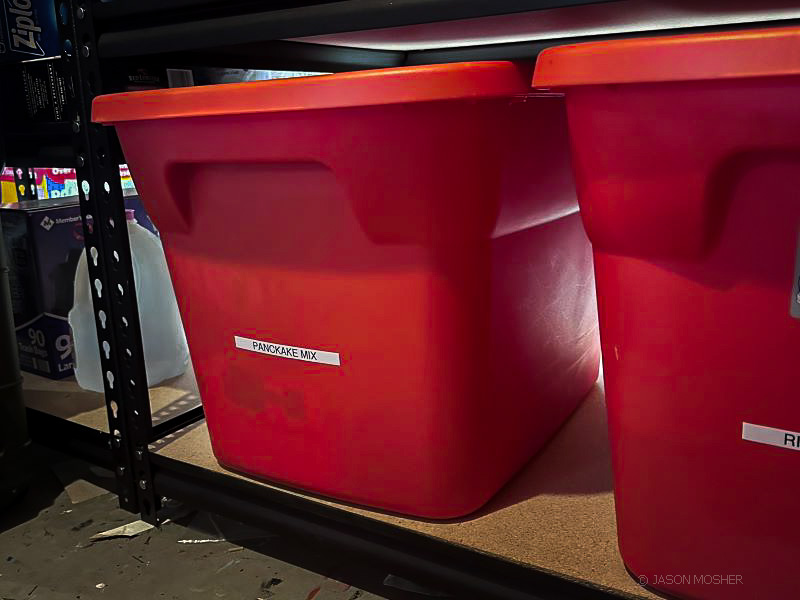
Prioritize Emergencies
- Identify Risks: Assess the risks specific to your region, such as natural disasters (hurricanes, earthquakes, floods), technological threats (cyber-attacks, power grid failures), and societal threats (terrorism, civil unrest).
- Create a Plan: Develop a comprehensive plan that addresses each identified risk. Outline specific actions to take before, during, and after an emergency.
- Set Goals: Establish short-term and long-term goals. For example, aim to have a three-day emergency supply within a month and a one-month supply within a year.
- Budgeting for Preparedness: Preparing for emergencies can be costly, but it’s essential to manage your budget wisely. Start small and begin with basic supplies like water, food, and first aid kits. Gradually add more advanced items as your budget allows.
- Look for Sales: Take advantage of sales and discounts on emergency supplies. Bulk purchasing can also reduce costs.
- Repurpose Items: Many household items can be repurposed for emergency use. For example, old blankets can provide extra warmth, and empty bottles can be used for water storage and filtering. Get some good storage containers and keep these items somewhere accessible.
- DIY Projects: Consider do-it-yourself projects for items like rainwater collection systems or solar chargers.
Planning an Evacuation
Unfortunately, evacuating should be part of your emergency plan. If possible, it’s best to stay in you home, but when you do have to leave, don’t let it catch you off guard. Have a Go-Bag set up for each person in your household. This is a bag with some basic items like food, water, small medical kit, flashlight, blanket, extra clothes etc.
Identify multiple routes out of your area in case primary roads are blocked. Familiarize yourself with these routes and practice driving them. Everyone in the home should know where to meet in case you get split up.
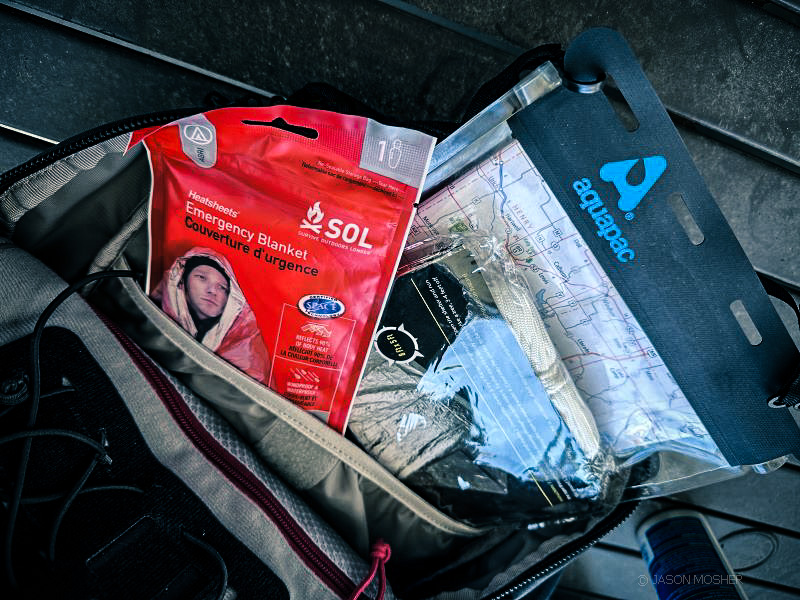
Keep your vehicle in good condition and maintain at least half a tank of gas at all times. This isn’t as hard as you think, it just takes a little effort. Store an emergency kit in the trunk, including a spare tire, jack, jumper cables, and basic tools. I already keep a Get-Home Bag in my car, so this would provide some extra supplied during an evacuation.
Practice Your Plan
One of the most important things you can do as part of your emergency preparedness is to practice. This is no different than anything else in life. The more you do it, the better you get at it. This can be a family fun day and it helps make sure everything you prepare works properly. Eat some of the food you store, try building a water filter, start the generator, etc.
This is when you work out all the kinks you didn’t know were there. You will also find ways to be more efficient and find things you missed. If you have kids, they will have a blast when you say, “Emergency Drill” and flip off the power to you breaker box. A fun night with flashlights and emergency food is good practice and good family time.
Start planning today
You may not know what the future will bring, but you can at least be a little prepared. Organization and a steady pace are key to success. You will no doubt find a lot more ideas than what we have shared today, but hopefully, this will help get you started. Hope for a peaceful future, but plan for the unexpected.





